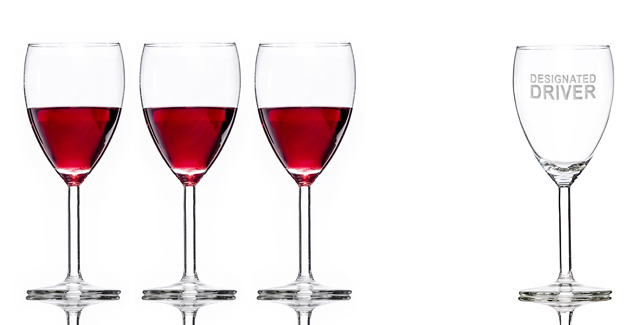RAC Foundation joins emergency services' call to reduce drink-drive limit
A coalition of road safety charities, emergency services and health groups – including the RAC Foundation – have today made fresh calls for MPs to reduce the drink driving limit in England and Wales.
The call comes after statistics show no progress has been made on drink driving since 2010, with 240 deaths and more than 8,000 casualties reported each year.
England and Wales have one of the highest drink-drive limits in the world. Set at 80mg alcohol per 100ml blood, it is greater than the rest of Europe (with the exception only of Malta), as well as Commonwealth countries such as Australia, New Zealand and South Africa. The Government of Malta announced plans to lower the drink-drive limit to 50mg this month in a new National Alcohol Policy to reduce harm.(1)
Scotland lowered its limit to 50mg in December 2014, and police figures showed a 12.5% decrease in drink-drive offences in the first nine months.(2) Northern Ireland is set to lower its drink driving limit before the end of 2016.
Drink driving costs £800 million each year and the majority (60%) of those killed or injured are people other than the driver, such as passengers, pedestrians and cyclists. Research shows that lowering our drink-drive limit to 50mg alcohol/100ml blood would reduce drink driving deaths by at least 10%.
A two-minute animation has been produced by the Institute of Alcohol Studies to support this campaign, outlining the key arguments.
Organisations that support a lower limit also include BRAKE, the Police Federation, Fire Brigade Union, Royal College of Emergency Medicine, and the AA (see notes to editors for full list of supporters). The latest British Social Attitudes Survey showed more than three-quarters (77%) of the public are in favour of the move.
Katherine Brown, Director at the Institute of Alcohol Studies, said:
“Recent decades have seen great improvements in road safety, but progress on drink driving has ground to a halt. With hundreds of lives lost each year, we can’t afford to let England and Wales fall behind our neighbours in road safety standards.
“It’s time the Government looked at the evidence and what other countries are doing to save lives and make roads safer. We need to make drink driving a thing of the past, and to do this we need a lower drink-drive limit.”
Steve Gooding, director of the RAC Foundation, said:
“Policy in this area hasn’t moved for half a century, but in the face of mounting evidence it increasingly falls on opponents of a limit reduction to defend the status quo, rather than asking those who support a cut to keep making their case.”
ENDS
Notes to Editors:
Organisations lending their support to the animation calling for a lower drink drive limit include:
The RAC Foundation
The AA
Institute of Advanced Motoring
Campaign Against Drink Driving
Insure the Box
BRAKE: The Road Safety Charity
Allianz
Abellio
Medical Council on Alcohol
Spectrum Community Health
Alcohol Health Alliance
The Royal College of Emergency Medicine
British Medical Journal
Royal College of Practitioners
Royal Society of Public Health
College of Paramedics
SCARD: Support & Care After Road Death & Injury
Parliamentary Advisory Council for Transport Safety
Dorset Police and Crime Commissioner
Roadpeace
Fire Brigades Union
Police Federation
Merseyside Police and Crime Commissioner
Warwickshire Police and Crime Commissioner
Leicestershire Police and Crime Commissioner
Durham Police and Crime Commissioner
More information on drink driving, with fully referenced statistics and information on drink driving accidents across England and Wales broken down by region, can be found here:
Drink driving background info:
In England and Wales, the drink-drive limit is set at 80mg alcohol/100ml blood and has been since 1965. Drivers who drink up to this limit are six times more likely to be killed in an accident than drivers who have not consumed alcohol.
The cost of UK drink driving accidents and casualties is £800 million per year.(3) This does not include the 40% of fatal accidents where people have alcohol within their system, but are below the 80mg limit.(4)
Drink driving leads to 240 deaths and more than 8,000 casualties each year.
The Department for Transport calculate that 60% of those who are killed or injured in reported drink driving incidents are people other than the driver, such as passengers, other road users or pedestrians.(5)
References:
(1) Malta National Government (6 October 2016) Alcohol Policy Document
(2) BBC News (29 May 2015) Drink-drive offences fall after lower limit introduced
(3) Institute of Alcohol Studies. Drink driving factsheet
(4) Department for Transport (2016) Proportion of killed drivers/riders resulting from reported accidents by BAC category
(5) Department for Transport (2016) Estimates for accidents involving illegal alcohol levels: 2014 (final)
For more information, please contact:
Philip Gomm, Head of External Communications, RAC Foundation
Email: [email protected]
Tel: 0207 747 3445
The RAC Foundation is a transport policy and research organisation, and registered charity, that explores the economic, mobility, safety and environmental issues relating to roads and their users. The Foundation publishes independent and authoritative research with which it promotes informed debate and advocates policy in the interest of the responsible motorist. All the Foundation’s work is available at: www.racfoundation.org
Habib Kadiri, Research & Information Officer, Institute of Alcohol Studies
Alliance House, 12 Caxton Street, London SW1H 0QS
Email: [email protected]
Tel: 0207 222 4001
The Institute of Alcohol Studies is a company limited by guarantee No 05661538 and registered charity No 1112671.


